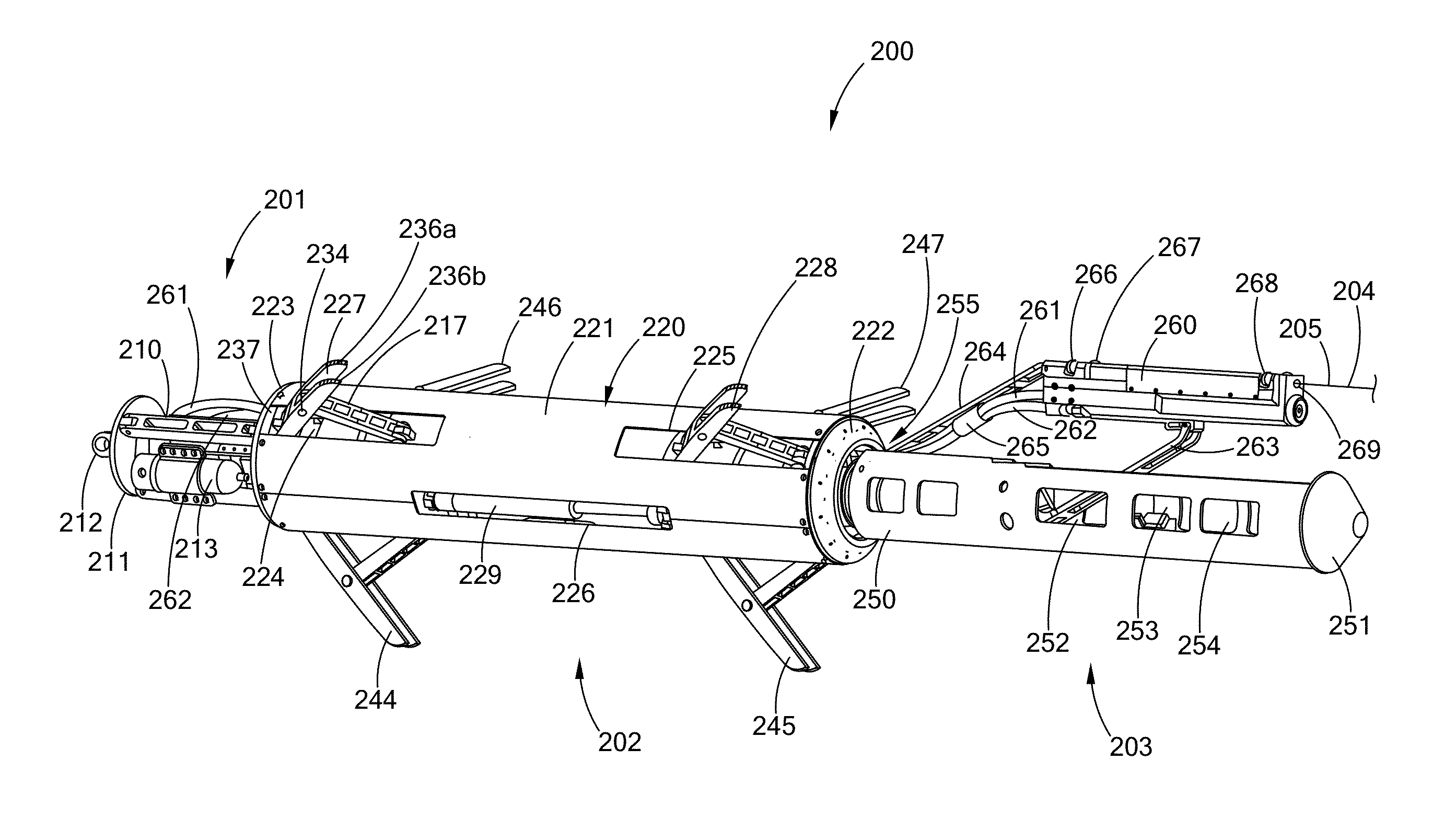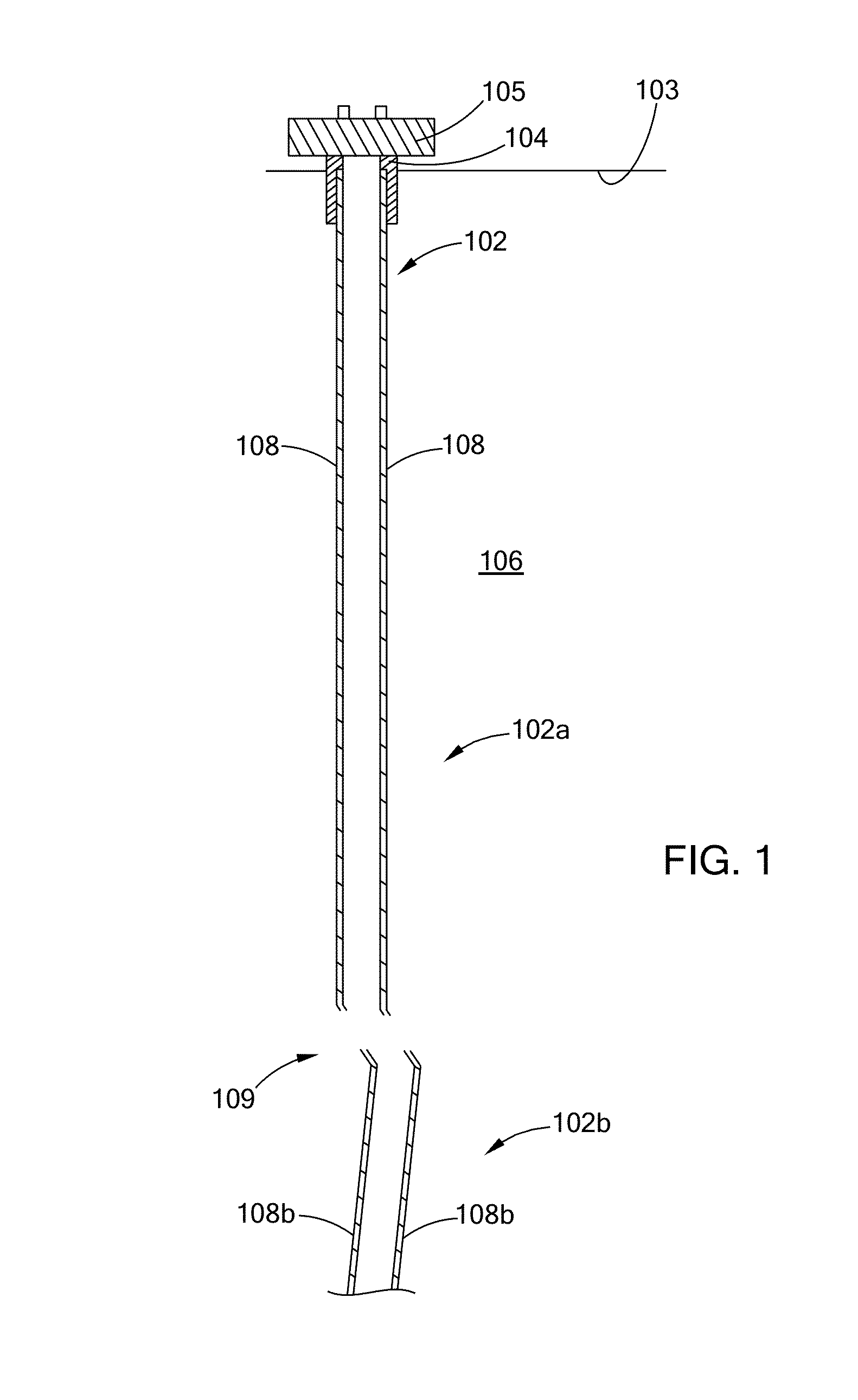High power laser decommissioning of multistring and damaged wells
a laser system and laser tool technology, applied in the direction of fluid removal, sealing/packing, borehole/well accessories, etc., can solve the problems of complex and varied steps of plugging, abandoning and decommissioning, and no longer be economically producing hydrocarbons
- Summary
- Abstract
- Description
- Claims
- Application Information
AI Technical Summary
Benefits of technology
Problems solved by technology
Method used
Image
Examples
example 1
[0214]A predetermined laser delivery pattern is provided to make a cut in borehole structures to create a plug passageway, that when filled with cement creates a plug that extends into, and fills the entirety of openings in borehole and across the entirety of the borehole diameter for a length of 200 feet. Turning to FIG. 14 there is shown a schematic cross section of a section of a well that is to be plugged. The well 8000 is located in formation 8001. The well is in a telescoping configuration with the well bore wall surface 8007 narrowing in a stepwise manner as the depth of the well increases. The well 8000 has an outer casing 8002, an inner intermediate length casing 8010, an inner longer length casing 8006, and an innermost tubular 8008, e.g., a production casing. Sections of the annular space between the borehole wall 8007 and the casings are filled cement. Thus, cement 8003 is between borehole wall 8007 and casing 8002; and cement 8005 is between borehole wall 8007 and casin...
example 2
[0216]Two additional laser cut slots are made in the well of Example 1. These slots are spaced between the other two slots. In this manner four slots are cut in the tubulars at using at 0°, 90°, 180°, 270° (12 o'clock, 3 o'clock, 6 o'clock, and 9 o'clock). The length of these four slots are each about 200 feet long.
example 3
[0217]A disc shaped cut, removing all tubulars at the bottom of the laser delivery pattern is added to the laser patterns of Examples 2 and 3. The size of the disc shaped cut coincides with the size of a packer. In this manner the packer, or similar type device, can be set at the bottom of the laser delivery pattern, filling the space between the exposed borehole wall. Thus, as the cement is pumped into the well to form the plug, the packer at the bottom of the cuts prevents the cement from flowing into and filling annular spaces below the laser cut pattern.
PUM
 Login to View More
Login to View More Abstract
Description
Claims
Application Information
 Login to View More
Login to View More - R&D
- Intellectual Property
- Life Sciences
- Materials
- Tech Scout
- Unparalleled Data Quality
- Higher Quality Content
- 60% Fewer Hallucinations
Browse by: Latest US Patents, China's latest patents, Technical Efficacy Thesaurus, Application Domain, Technology Topic, Popular Technical Reports.
© 2025 PatSnap. All rights reserved.Legal|Privacy policy|Modern Slavery Act Transparency Statement|Sitemap|About US| Contact US: help@patsnap.com



